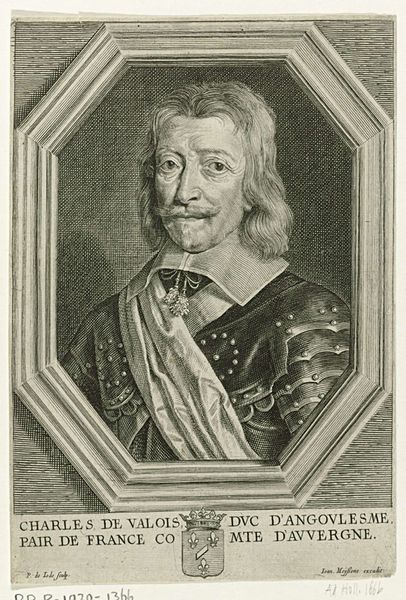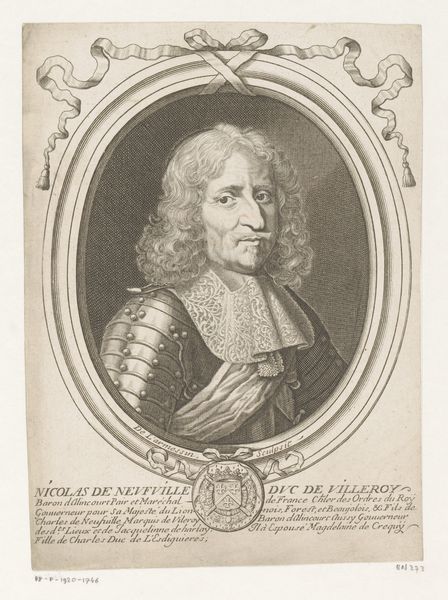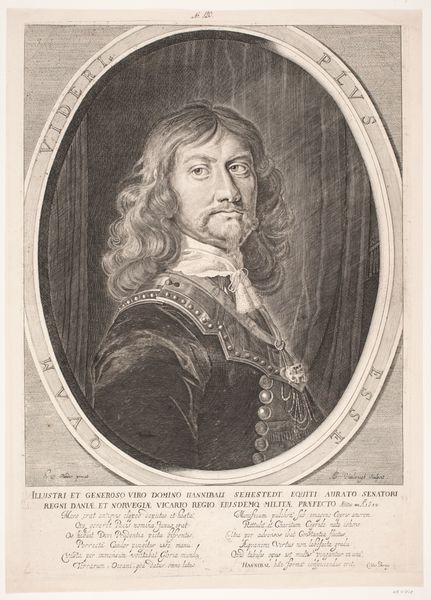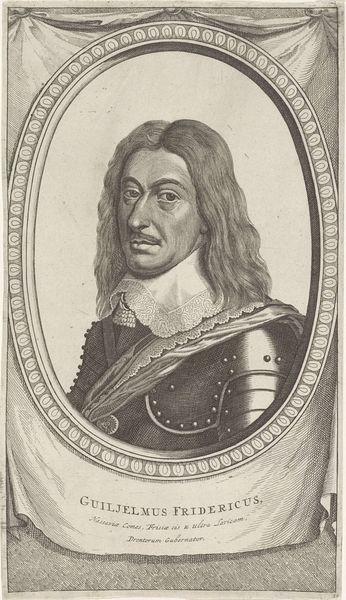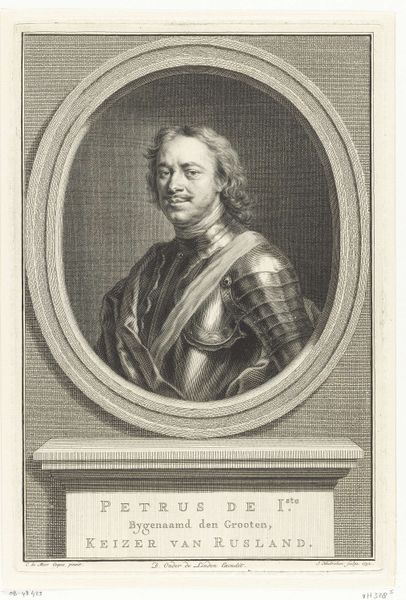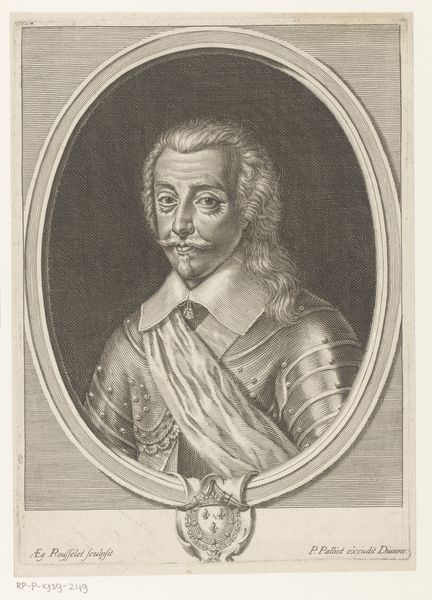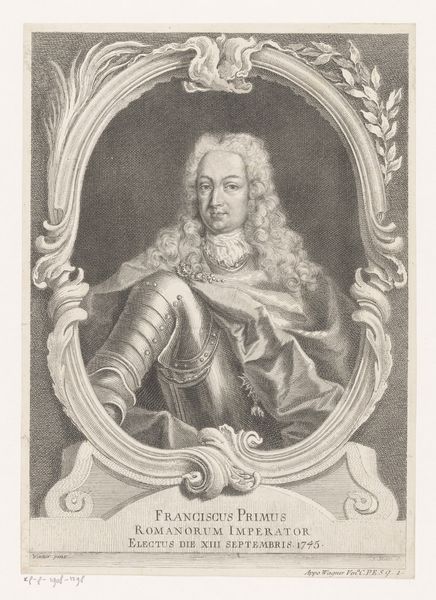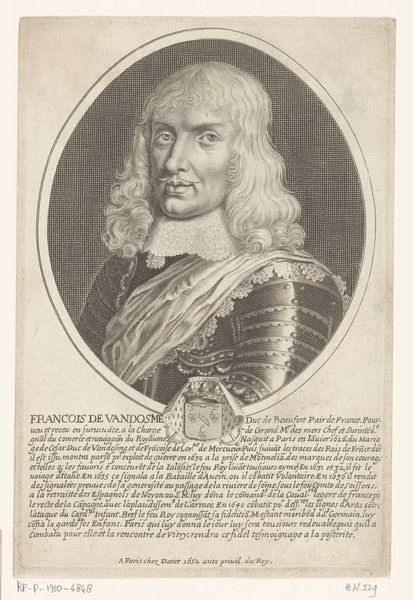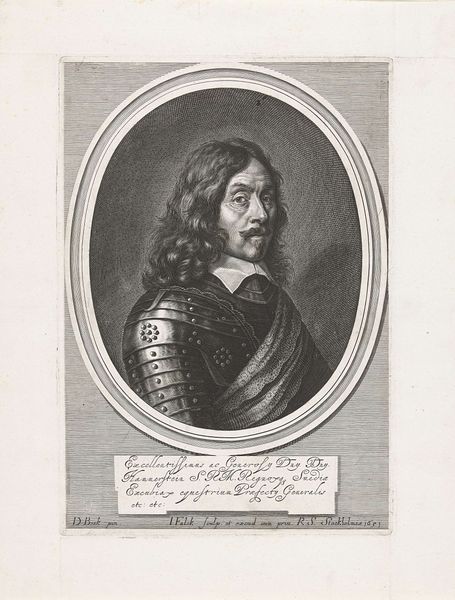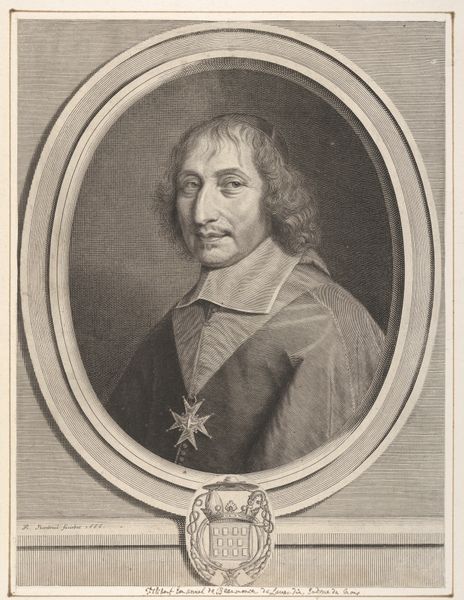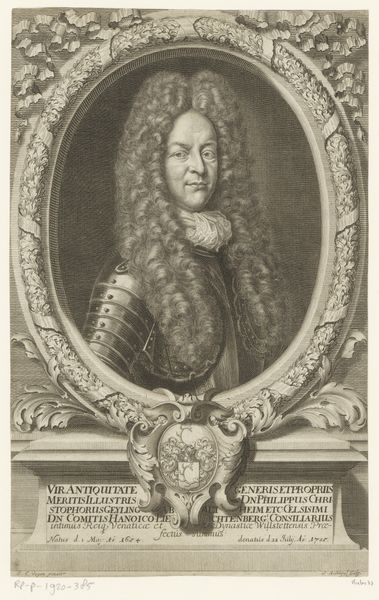
print, engraving
#
portrait
#
baroque
# print
#
old engraving style
#
figuration
#
line
#
history-painting
#
engraving
Dimensions: sheet (trimmed within plate mark): 21.8 x 14 cm (8 9/16 x 5 1/2 in.)
Copyright: National Gallery of Art: CC0 1.0
Editor: So, this is an engraving, a portrait of François de l'Hospital du Hallier, by Michel Lasne. It's a very detailed work, almost photorealistic. It’s quite striking how the texture of the armor contrasts with the softer rendering of his face and hair. What strikes you about this print? Curator: Well, let’s consider the engraving itself. The labor involved in creating those intricate lines! And it’s not just about the skill of the engraver, Lasne, but the whole system of production. The demand for images, the economics of printmaking, the workshops involved... It tells us so much about how images were disseminated and consumed in that era. Did Lasne work as an independent artist or for a larger shop? Editor: That's interesting. I hadn’t thought about it that way. It makes you consider the purpose. Was it simply decorative, or did it have another function? Curator: Absolutely! And the material matters. Why an engraving? What did it allow that other media couldn't? Think about reproducibility, distribution. Prints democratized image ownership to some extent, although literacy limited access. This also served as a propaganda tool through the material production of these works. Editor: So, it’s less about the individual and more about the society that made the artwork possible? Curator: Precisely! The portrait itself serves as a record of wealth and power, which, as it spreads in distribution, propagates this image to a broader audience. But equally important are the social relations involved in the artwork's making. What were the conditions like for Lasne as a craftsman producing this artwork? How were images being consumed more widely than portraiture of this sort prior? This informs the understanding of the image just as much as Hallier himself. Editor: I never considered it that deeply, viewing the process itself as a subject to study. Thank you for showing me another side of approaching art. Curator: Of course. Thinking about art this way opens a window into broader social, economic, and even political dynamics.
Comments
No comments
Be the first to comment and join the conversation on the ultimate creative platform.
